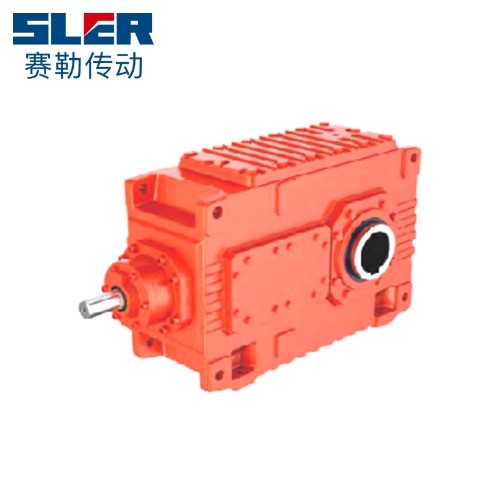H/B type industrial gear units, also known as H/B gearboxes, are a type of industrial gearbox used for transmitting power and torque in various industrial applications. The structure of an H/B type industrial gear unit typically includes the following components:
Housing: The gearbox is housed in a rigid and durable enclosure or housing, which provides support and protection to the internal components. The housing is usually made of cast iron or steel to withstand heavy loads and provide stability.
Input Shaft: The gear unit has an input shaft that receives rotational power from an external source, such as an electric motor or an engine. The input shaft is connected to the driving device and transfers torque to the gearbox.
Output Shaft: The gearbox also has an output shaft that transmits power to the driven machinery or equipment. The output shaft is connected to the load and rotates at a different speed than the input shaft, depending on the gear ratio.
Gears: The heart of the H/B type gear unit is a set of gears. These gears are carefully designed and arranged to achieve the desired speed reduction or increase, torque multiplication, and direction change. The gears can be spur gears, helical gears, bevel gears, or a combination of different gear types depending on the specific application and requirements.
Bearings: Bearings are used to support and facilitate the smooth rotation of the input and output shafts. They reduce friction and enable efficient power transmission. The gearbox may have various types of bearings, including ball bearings, roller bearings, or plain bearings.
Lubrication System: Industrial gear units require proper lubrication to reduce friction, dissipate heat, and protect the internal components. The gearbox typically incorporates a lubrication system that includes oil sumps, oil pumps, filters, and other components to ensure the gears and bearings are adequately lubricated.
Seals: Seals are used to prevent lubricant leakage and keep contaminants out of the gearbox. They are placed at various points, such as around the input and output shafts, to maintain a sealed environment within the gearbox.
The specific configuration and design of an H/B type industrial gear unit can vary depending on factors such as the required torque, speed, and application requirements. Different manufacturers may have their own variations and additional features incorporated into the gear unit design.Meanwhile,H/B type industrial gear units are used in a variety of industrial applications to transmit power and torque between input and output shafts. The main functions of H/B type industrial gear units include:
Speed Reduction or Increase: One of the primary functions of H/B type industrial gear units is to reduce or increase the speed of the input shaft to match the speed requirements of the driven equipment or machinery. This is achieved by using different gear ratios, which determine the speed and torque output of the gearbox.
Torque Multiplication: Another important function of H/B type industrial gear units is to multiply the torque output of the driving device. This is achieved by using a combination of different gear sizes and ratios to increase the mechanical advantage of the gearbox.
Direction Change: H/B type industrial gear units can also be used to change the direction of rotation between the input and output shafts. This is accomplished by using bevel gears or other types of gears that change the direction of power transmission.
Load Distribution: The H/B type industrial gear units can also help distribute the load between multiple output shafts, ensuring that the load is evenly distributed and reducing wear and tear on individual components.
Noise Reduction: H/B type industrial gear units can help reduce noise and vibration caused by the transmission of power and torque. This is achieved by using precision gears, bearings, and other components that are designed to operate smoothly and quietly.
Overall, the functions of H/B type industrial gear units are critical to many industrial processes and applications. The gearbox provides an essential means of transferring power and torque, reducing speed, increasing torque, changing direction, and distributing loads.





 英语
英语 中文简体
中文简体 俄语
俄语1.png)
1.png)
1.png)
a.png)







